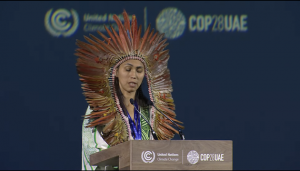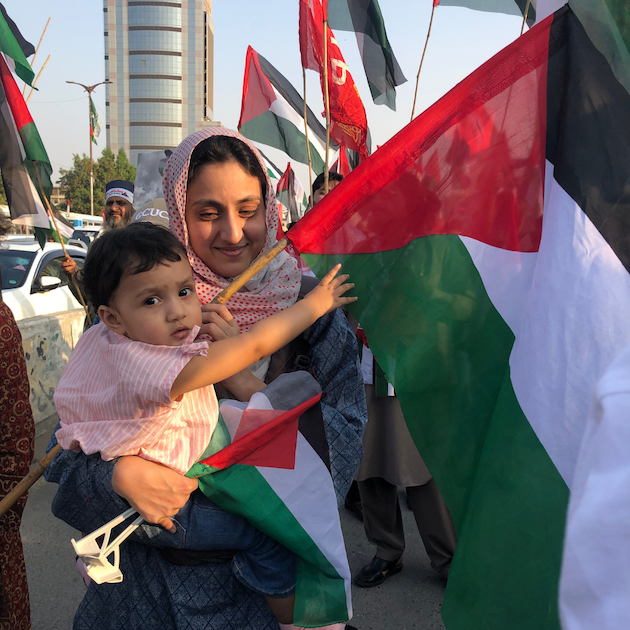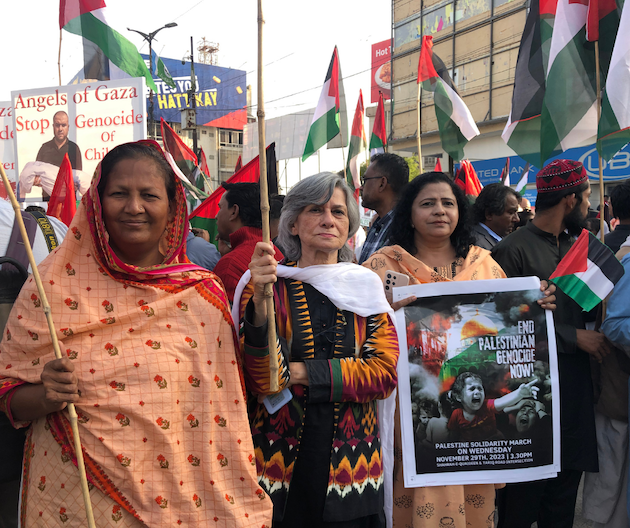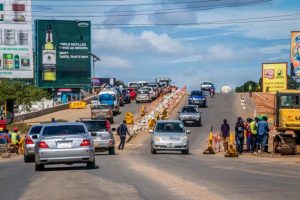
Brazilian climate activist Isabel Prestes da Fonseca.
By IPS Correspondent
DUBAI, Dec 1 2023 – United Nations Secretary-General António Guterres said world leaders needed to urgently commit to three strategies: cut emissions, accelerate a just, equitable transition to renewables, and to climate justice.
“The science is clear: The 1.5-degree limit is only possible if we ultimately stop burning all fossil fuels. Not reduce. Not abate. Phaseout—with a clear timeframe aligned with 1.5 degrees,” he said at the opening session of COP 28 in Dubai.
“So, I have a message for fossil fuel company leaders: Your old road is rapidly aging. Do not double-down on an obsolete business model. Lead the transition to renewables. Make no mistake: the road to climate sustainability is also the only viable pathway to the economic sustainability of your companies. I urge governments to help industry make the right choice—by regulating, legislating, putting a fair price on carbon, ending fossil fuel subsidies, and adopting a windfall tax on profits.”
His message to business was also direct.
Disasters that they did not cause are devastating developing nations. Extortionate borrowing costs are blocking their climate action plans. And support is far too little, far too late,” he added, saying, “The climate challenge is not just another issue in your inbox. Protecting our climate is the world’s greatest test of leadership. I urge you to lead. Humanity’s fate hangs in the balance.”
UAE President Mohammed bin Zayed Al Nahyan said the UAE had set a national pathway to emit zero by 2050, committed to a 40 percent reduction of emissions by 2030, and committed USD 100 billion to financing climate action with a focus on renewable and clean energy. He said they had also committed to investing USD 130 billion in the next seven years. He announced a USD 30 billion fund for global climate solutions, specifically designed to close the climate finance gap.
According to Kind Charles III, it is obvious that there are risks associated with climate change, and it has “devastated countless communities.”
He said real action was needed and noted that “records are being broken so often, perhaps we are becoming immune to what they are telling us. We need to pause to understand what this actually means. ”
The earth is warming faster than nature can fix it, and he asked how dangerous “we are willing to make our world.”
He called for innovation to move decisively toward transitions, including investments in regenerative agriculture.
“In 2050, our grandchildren won’t be asking what we said but living with the consequences of what we didn’t.”
Luiz Inácio Lula da Silva said it was staggering that 2 trillion dollars were spent on missiles.
“Rural workers cannot feed their families any more when floods come and destroy everything.”
The solution, he said, is multilateralism.
“No country will solve their problems alone, he said before telling the audience that Brazil had drastically reduced deforestation, developed an ecological plan for green industrialization with a common vision with other Amazon countries.
Brazilian climate activist Isabel Prestes da Fonseca, co-founder and environmental director of Instituto Zág, an indigenous youth-led organization, said: “I stand here today, representing indigenous voices and the urgent need to address environmental crises. Join us in this fight for nature and biodiversity. Together, we can be the change.”
IPS UN Bureau Report





